Advertisement
We all know we have to winterize the engine. But what else can go wrong?
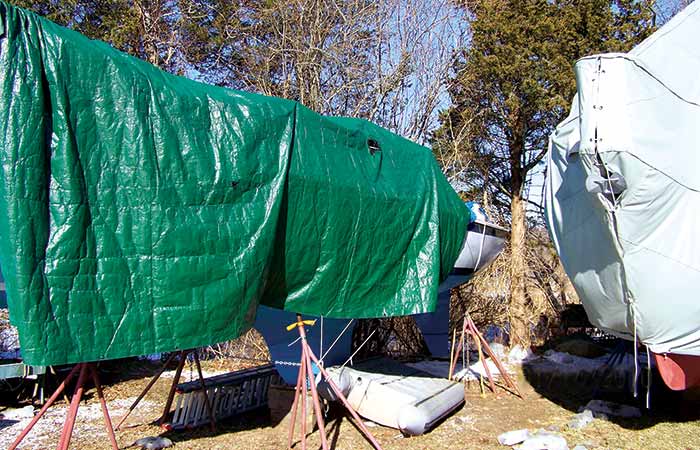
Over the years, we at BoatUS have seen thousands of winterizing claims, and we're still surprised at how ice and cold weather can take a toll on boats. If we had to summarize all that knowledge, we'd say two things: First, don't put it off or think someone will do it, even if they did it last year. Winter can sneak up on you, and your boatyard might not remember that you asked them four years ago to keep winterizing your boat. Second, if you're doing it yourself, get ALL the water out of everything that holds water. Fun fact: When water freezes, it expands by almost 10%. Not-so-fun fact: Manifolds don't expand, which means they — or anything else that holds water, can be cracked open like an egg. But there are a lot of other ways winter can get your boat, most of which could be avoided with good winterizing practices. Here are some of the most common winter "gotchas" and how to make sure they don't happen to you.
1. Stand And Deliver
If jackstands are not set up properly, they can end up shifting out from under the hull and dumping your boat. Jackstands should be placed as far out from the boat as practical to support the boat in high winds, with at least three per side for boats over 26 feet and additional supports at overhangs. The weight of the boat can easily force a jackstand base deep into mud, sand, or asphalt. Even clay that seems brick hard can become a quagmire in heavy spring rains, allowing stands to loosen, shift, and spill the boat. Placing a sheet of sturdy, sound plywood under each base and using safety chains to connect the stands will help to stabilize the support upon which your boat rests.

2. Cover Up
Covering your boat in the winter benefits it by protecting gelcoat, preventing snow and ice accumulation, and keeping water from pooling on the decks. More frugal skippers seem to think that a few tarps stitched together with a spiderweb of lines qualify for winter duty.
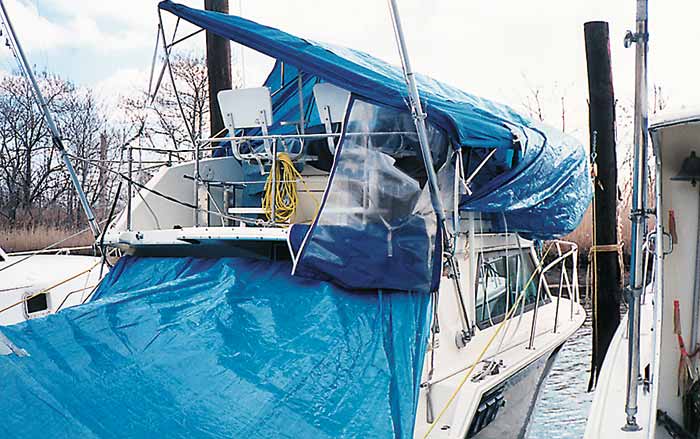
In the first serious storm, these often end up shredded, and in their death throes they deposit large amounts of snow and ice into the boat they are supposed to be protecting. If you're going to cover the boat, use a custom cover or shrinkwrap it. But either way, make sure there's lots of ventilation to prevent mold from taking over down below.
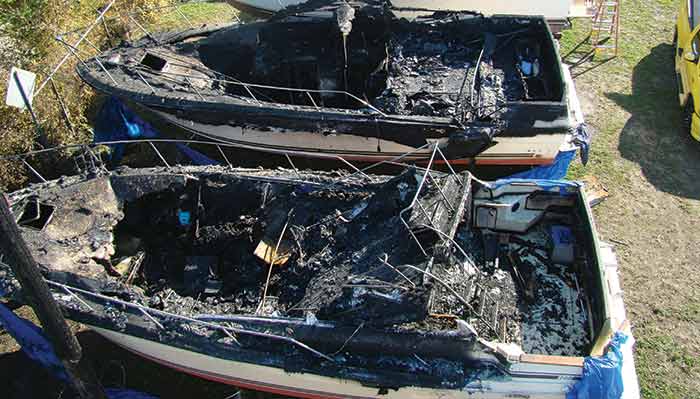
If you do choose to shrinkwrap, think twice and even three times before doing it yourself. All it takes is a moment of inattention to ignite the shrinkwrap, and if the fire occurs inside the cover, it might not even be visible right away. Every fall we get several claims involving flaming shrinkwrap, often involving multiple boats. This is one job best left to the pros.
3. Frame Job
Stanchions are not meant to take the weight of snow and ice that can accumulate on a cover. And, as this photo shows, neither are the decks. This stanchion drove right through the deck on this 26-foot sailboat when the ice overloaded the stanchion and the deck beneath it. If you decide to cover the boat, do yourself — and your boat — a favor, and build a proper frame.
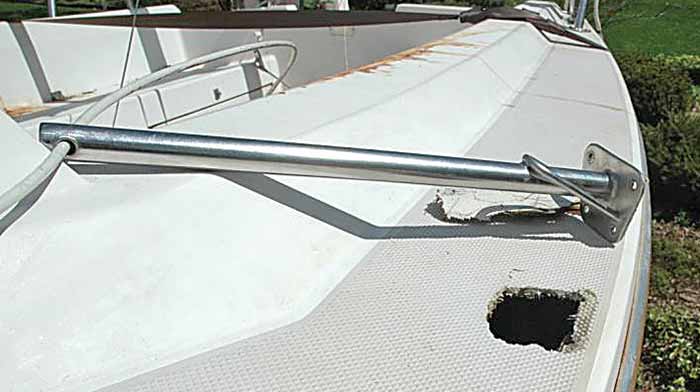
4. Too Hot To Handle
Our Marine Insurance claim files show that "winterizing" a boat by leaving a heater running on board is just not a good idea. First, your engine is least likely to be protected when it most needs it — in a big storm when the temperature plummets and the power goes out. Second, every winter we see fires from heaters, connections, and cords where heaters were left running on unattended boats. Unless you are located in Hawaii or the Florida Keys, we recommend winterizing your engine if you will be laying up the boat for even a few weeks to minimize the chances that a sudden freeze will put it out of commission next season.
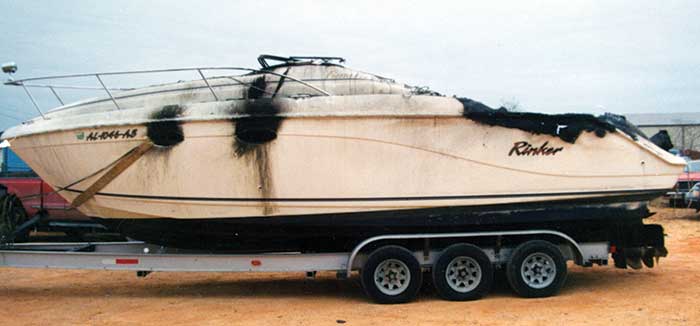
Tip
5. Down The Drain
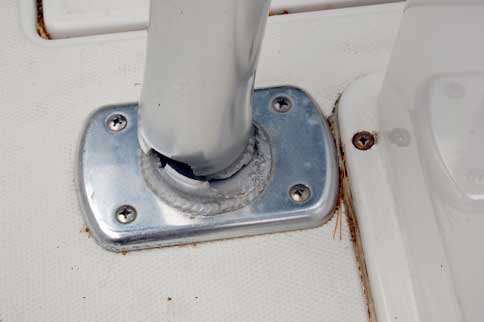
Many places on boats have small holes so that water can drain out — boats are wet places after all. If those drains get plugged, it may not matter that much in the summer. But if they're plugged in the winter, the water inside will expand as it freezes (10%, remember?) and can do serious damage. Check drain holes in stanchion bases, mast steps, livewells, and anywhere else you have found them to make sure they are not clogged and no water has accumulated. If some areas are not draining adequately, consider adding a few more drain holes to facilitate the process. While you're at it, don't forget about seacocks, many of which have a small drain plug that can be removed to allow trapped water to escape.
6. Soggy Bottom
If, when you haul your boat for the fall, you notice that the rudder is dripping water a few days after it has been on the hard, chances are you have water trapped in the rudder. Leave it that way through the winter, and it may freeze and can cause serious damage to the fiberglass. Before the first freeze, you need to get that water out. You may need to drill a hole at the bottom of the leading edge of the rudder to let it drain. If you leave it open through the winter, that should help the laminate dry out, and you'll have an easier time filling and patching it in the spring. Before you put your baby back in the water, though, you'll want to figure out where that water came from and how to keep it from getting into the rudder again next season.

7. On Thin Ice
If you're going to leave your boat in the water, you need to make sure that snow and ice do not accumulate in the cockpit over the winter. Not only can the weight force the boat low enough in the water that it can backfill and sink, but the thaw-and-freeze cycle can create a plug of ice that slows drainage through the scuppers. It's best to cover a boat that's to be left in a slip, but if that's not possible, make sure to get to the marina after every storm to clear out the ice and snow and make sure scuppers are not blocked.
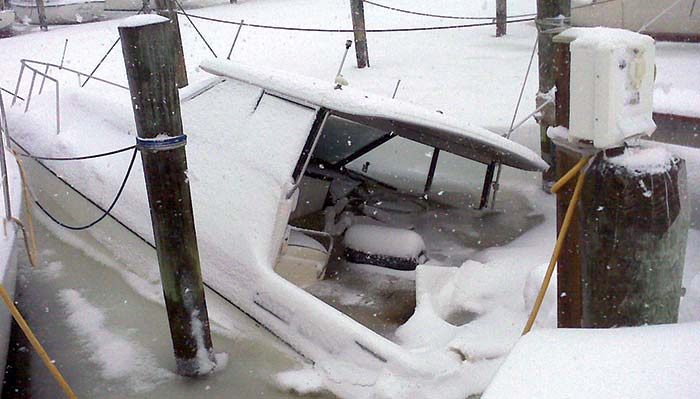
8. You've Got A 'Friend'
Unfortunately, a lot of the freezing claims we get start with an owner calling and saying, "I let my buddy winterize the boat." The rest of the news is never good and most often involves cracked engine blocks spewing brown bubbles or muddy- looking oil — and maybe a rant about ex-friends. Winterizing is not rocket science, but forgetting even one detail, or doing it incorrectly, can spell disaster for the boat — and your friendship next spring. If you're not comfortable winterizing your boat, have an experienced professional do it.

And if you are going to have an experienced professional do it, make sure to get it in writing. The term "winterizing" is not universal, and your idea and theirs may not be the same. Will they just run antifreeze through the engine, or will they service the AC and refrigeration units, too? Spell out what will be done so, if anything goes wrong, it's clear who is responsible.
